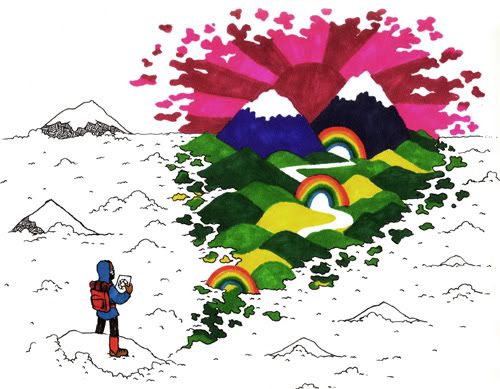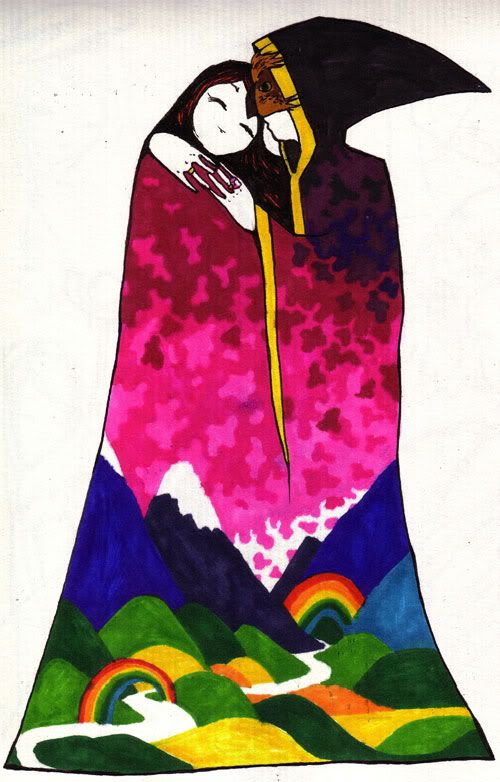Every head is a world.
~Cuban proverb (Feldman, A World Treasury)

Man judges himself in accordance with his value to society
The general tendency toward social improvement in our day has led directly to a disregard, rising to neglect, for the human material of which society is built. The fault lies not in the goal itself--which is constructive in the main---but in the fact that individuals, rightly or wrongly, tend to identify their self-images with their value to society. Even if he has emancipated himself from the educators and protectors, man does not strive to make himself any different from the pattern impressed upon him from the outset. In this way society comes to be made up of persons increasingly alike in their ways, behavior, and aims. Despite the fact that the inherited differences between people are obvious, there are few individuals who view themselves without reference to the value attributed to them by society. Like a man trying to force a square peg into a round hole, so the individual tries to smooth out his biological peculiarities by alienating himself from his inherent needs. He strains to fit himself into the round hole that he now actively desires to fill, for if he fails in this, his value will be so diminished in his own eyes as to discourage further initiative. These considerations must be borne in mind to appreciate fully the overwhelming influence of the individual's attitude toward himself once he again seeks to foster his own growth, that is, to allow his specific qualities to develop and reach fruition.
Judging a child by his achievements robs him of spontaneity
During his early years a child is valued, by and large, not for his achievements, but simply for himself. In families where this is the case, the child will develop in accordance with his individual abilities. In families where children are judged primarily by their achievements, all spontaneity will disappear at an early age. These children will become adults without experiencing adolescence. Such adults may from time to time feel an unconscious longing for the adolescence they missed, a desire to seek out those instinctive capacities within themselves that they were denied their youthful will to develop.
Self-improvement is linked to recognition of the value of the self
It is important to understand that if a man wishes to improve his self-image, he must first of all learn to value himself as an individual, even if his faults as a member of society appear to him to outweigh his qualities.
We may learn from persons crippled from birth or childhood how an individual may view himself in the face of obvious shortcomings. Those who succeed in looking at themselves with a sufficient, encompassing humanity to achieve stable self-respect may reach heights that the normally healthy will never achieve. But those who consider themselves inferior because of their disabilities, and overcome them by sheer power, tend to grow into hard and embittered adults who will take revenge upon fellow men who are not at fault and, moreover, who may not be able to change the circumstance even if they wanted to do so.
Action becomes the main arm in self-improvement
Recognizing one's value is important at the start of self-improvement, but for any real improvement to be achieved, regard for the self will have to be relegated to second place. Unless a stage is reached at which self-regard ceases to be the main motivating force, any improvement achieved will never be sufficient to satisfy the individual. In fact, as a man grows and improves, his entire existence centers increasingly on what he does and how, while who does it becomes of ever decreasing importance.
The difficulty of changing an earlier pattern of action
A man tends to regard his self-image as something bestowed upon him by nature, although it is, in fact, the result of his own experience. His appearance, voice, way of thinking, environment, his relationship to space and time---to choose at random---are all taken for granted as realities born with him, whereas every important element in the individual's relationship to other people and to society in general is the result of extensive training. The arts of walking, speaking, reading, and of recognizing three dimensions in a photograph are skills the individual accumulates over a period of many years, each of them depends upon chance, and on the place and period of his birth. The acquisition of a second language is not as easy as that of the first, and the pronunciation of the newly learned language will be marked by the influence of the first; the sentence structure of the first language will impose itself on the second. Every pattern of action that has become fully assimilated will interfere with the patterns of subsequent actions.
Difficulties arise, for instance, when a person learns to sit according to the custom of some nation other than his own. As these early patterns of sitting are not the result of heredity alone, but derive from the chance and circumstances of birth, the difficulties involved lie less in the nature of the new habit than in the changing of habits of body, feeling, and mind from their established patterns. This holds true for almost any change of habit, whatever its origin. What is meant here, of course, is not the simple substitution of one activity by another, but a change in the way an act is performed, a change in its whole dynamics, so that the new method will be in every respect as good as the old.
There is no awareness of many parts of the body
A person who lies down on his back and tries to sense his entire body systematically---that is, turning his attention to every limb and part of his body in turn---finds that certain sections respond easily, while others remain mute or dull and beyond the range of his awareness.
It is thus easy to sense the fingertips or lips, but much harder to sense the back of the head at the nape, between the ears. Naturally, the degree of difficulty is individual, depending on the form of the self-image. Generally speaking, it will be difficult to find a person whose whole body is equally accessible to his awareness. The parts of the body that are easily defined in the awareness are those that serve man daily, while the parts that are dull or mute in his awareness play only an indirect role in his life and are almost missing from his own self-image when he is in action.
A person who cannot sing at all cannot feel this function in his self-image except by an effort of intellectual extrapolation. He is not aware of any vital connection between the hollow space in his mouth and his ears or his breathing, as does the singer. A man who cannot jump will not be aware of those parts of the body involved that are clearly defined to a man who is able to jump.
{Awareness Through Movement, by Moshe Feldenkrais, ISBN 0-06-250322-7}

{Images Linked/Art by Matt Sewell/Programming by DPC}
The Earth is the center of the Universe
The house is the center of the earth
The family is the center of the house
The person is the center of the family
~Basque song

